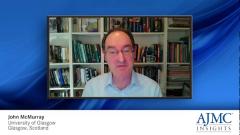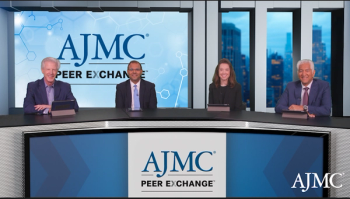
How Approved Agents Will Change the Standard of Care
Expert physicians consider how novel agents will affect the treatment paradigm for heart failure.
Episodes in this series

John McMurray, MBChB: The 2 big breakthroughs that we have had in the management of heart failure with reduced ejection fraction [HFrEF] are sacubitril-valsartan and SGLT2 inhibitors. With sacubitril-valsartan, the breakthrough part is neprilysin inhibition. We have always had valsartan or drugs like valsartan RAS blockers for 30 years; the new part is neprilysin inhibition. What are the pros and cons of neprilysin inhibition? With neprilysin inhibition, we saw a striking 20% reduction in cardiovascular mortality and a 21% reduction in heart failure hospitalization. We saw a reduced rate of decline in renal function, but the price we paid for that was a bit more hypotension and a bit less hyperkalemia than just with a RAS blocker alone. If we look at SGLT2 inhibitors, we don’t know how they would work with background RAS blockades, so we have studied these only on top of RAS blockers. That’s an important caveat.
With SGLT2 inhibitors, we saw slightly less reduction in cardiovascular mortality: maybe 17% rather than 20%. But there was more reduction in heart failure hospitalization of maybe 30% rather than 21%. There was little problem with hypotension, so that distinguishes them from neprilysin inhibition. We don’t run into problems with hyperkalemia, and we preserve kidney function, which we also do with neprilysin inhibition. Each of the 2 treatments have some differences in efficacy and safety. I would argue that they are not treatments that should be compared because we should always be thinking about using them together.
What any doctor who is interested in looking after patients with HFpEF [heart failure with preserved ejection fraction] prays for every day is some treatment that can improve symptoms and reduce hospital admission. It’s unrealistic to hope for an improvement in survival, but if we could get anything that was approved that we could use that would help these patients, it would be the most tremendous breakthrough, and it would be the biggest thing in heart failure for 30 years. I hope that at the upcoming Food and Drug Administration Advisory Committees, there might be a chink of light in terms of therapeutic intervention for these patients. Otherwise, we’ll have to wait until at least next year, when we get the results of the next wave of clinical trials in patients with HFpEF.
Scott D. Solomon, MD: If some of the agents that have been tested or are currently being tested are approved for use in HFpEF, it will make a big difference in the lives of our patients because we don’t have any clear evidence-based therapy that makes our patients feel better or makes them stay out of the hospital. We don’t know whether any of these will be approved for HFpEF. But if they do get approved, then we as clinicians will have another weapon to use in our arsenal in the treatment of this disease, for which we’ve had no therapy beyond empirical therapies. It is an area of huge unmet need. Between 40% and 50% of our patients being admitted to the hospital with heart failure have heart failure with preserved ejection fraction. We’re very much looking forward to the day when we have something that we can offer our patients.
We’re not going to stop looking for therapies for HFpEF until we find them, until we prove them, and until we have therapies that are available for our patients. There are a number of ongoing trials. Currently, there are trials with SGLT2 inhibitors. There are trials with intracardiac shunt devices. There are trials with nonsteroidal mineralocorticoid receptor antagonists. There’s a lot of interest in this area and a lot of enthusiasm for finding a therapy that can help our patients.
With respect to combination therapy and multiple agents, we do that in heart failure. We should be doing that in heart failure with reduced ejection fraction. We have multiple guideline-directed therapies, such as beta-blockers, ACE inhibitors, ARBs, RAS blockers, mineralocorticoid receptor antagonists [MRAs], and recently approved SGLT2 inhibitors. We have many therapies that we use in heart failure with reduced ejection fraction. In HFpEF, we’re looking for 1 therapy to start. I believe that if we get additional evidence with additional trials, we are ultimately likely to have multiple approaches to treating this syndrome.
Jaime Murillo, MD: What would it look like or what would be the impact of an agent approved for treatment of heart failure with preserved ejection fraction? It’s easy to do the numbers: There would be a huge impact. We’re talking about 50% of the population with heart failure. That’s massive. That’s huge, and we don’t have a good treatment that we can say clearly improves outcomes on the preserved heart failure side. We’re all waiting for it because an agent has been fairly good for patients with heart failure with reduced ejection fraction. We are still looking for better outcomes. Yes, we use the traditional low-dose diuretics. We make sure the blood pressure is well controlled with ACE inhibitors and ARBs. We may use spironolactone-like agents, MRAs. We may use SGLT2s, which are trending as well. In general, there is a huge opportunity in the group of patients with heart failure with preserved ejection fraction.
Newsletter
Stay ahead of policy, cost, and value—subscribe to AJMC for expert insights at the intersection of clinical care and health economics.











































